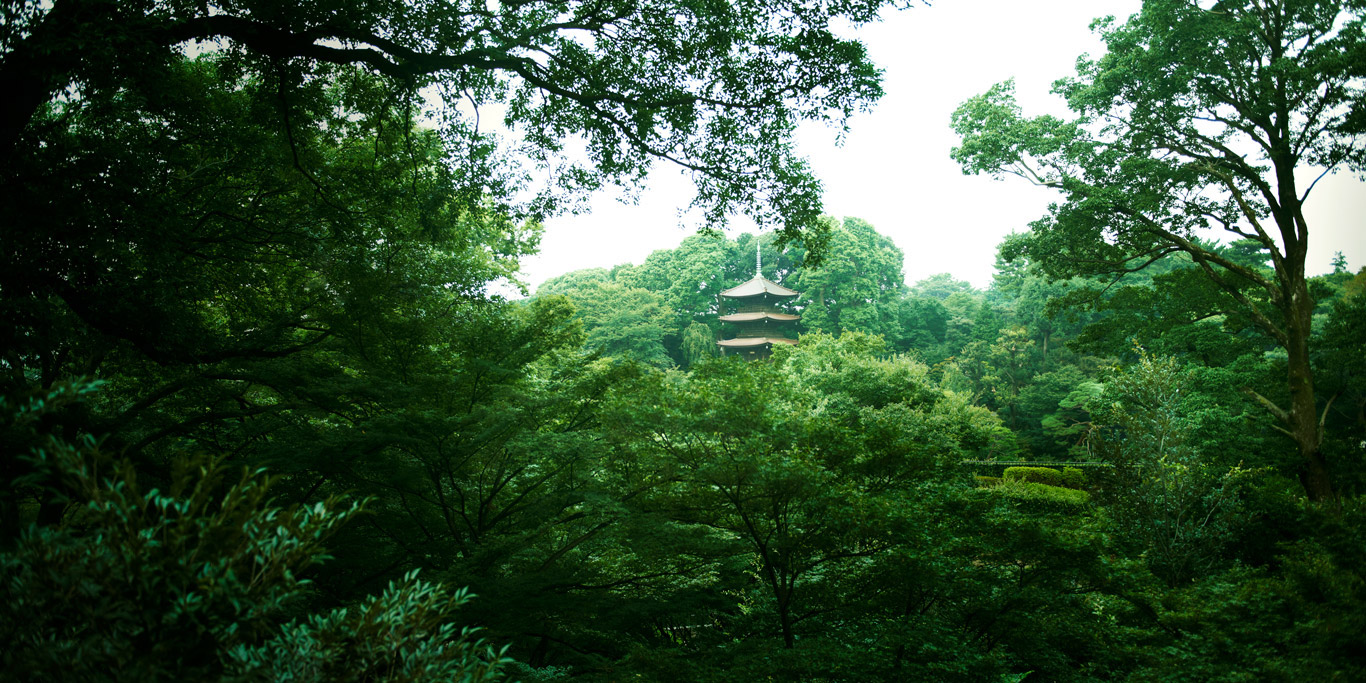

庭园与活动
东京椿山庄大酒店的“今”・看点
5 Great Places to Visit Near Hotel Chinzanso Tokyo
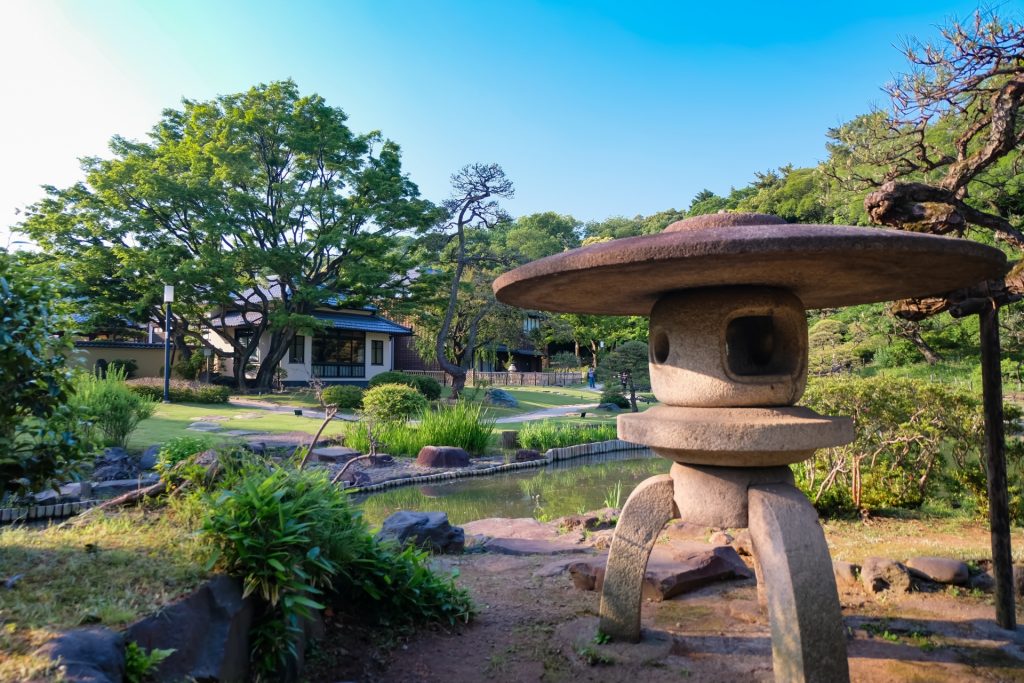
Hotel Chinzanso Tokyo is located in the Bunkyo ward in central Tokyo, an area with many historical sites dating back to the Edo period (1603 – 1868). It also has many museums, parks, and vibrant shopping streets that make it appealing to young Tokyoites looking to spend a relaxing afternoon in the city. While staying at our hotel, you’ll be able to feel the pulse of the metropolis, taking in both its rich history and contemporary cultures.
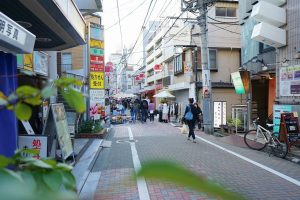
Read on to learn more about five major points of interest around the hotel. Most of these areas and facilities can be reached within 15 minutes on foot from Hotel Chinzanso Tokyo, making them ideal as destinations for a leisurely walk.
1. Edogawa Park: A Famous Cherry Blossom Viewing Spot in Tokyo

Edogawa Park stretches along the Kanda River, at the foot of a hill once known as Camellia Mountain that is now the location of Hotel Chinzanso Tokyo.
Kanda River is a man-made canal built during the 17th century in order to ensure water supplies to the center of the capital, which was then called Edo. Originally called Otomegawa, the river’s name changed to Edogawa during the Meiji period (1868-1912) and changed again in 1965 when it took on its current name, Kandagawa.
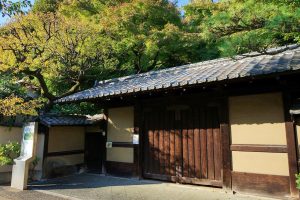
The haiku poet Matsuo Basho (1644 – 1694) is thought to have been involved in the reconstruction works of this water canal for three years from 1677. His residence by the river has been recreated by his devoted followers. Sekiguchi Bashoan, or Basho’s Hut, can be viewed from outside. The spring in the garden comes from the same source as the water well in Chinzanso Garden.
The uphill area of Edogawabashi Bridge is known as Mejirozaka, or Mejiro Hill. During the Edo period, this area was home to Mejiro Fudoson, a prominent temple connected to the third Tokugawa shogun, Iemitsu (1604 – 1651). Back in those days, the path leading to the temple was bustling with Buddhist worshippers who came there to pay their respects. At the same time, there were many samurai and daimyo (feudal lords) residences in this area. The traces of this noble history have been sadly lost to wartime bombings. Nevertheless, a walk through Edogawa Park allows you to encounter monuments and signs recounting the history of these sites.

Edogawa Park is currently best known as a cherry blossom viewing spot thanks to the endless rows of cherry trees lining both sides of the river. The blooms are lit after sunset, turning the entire area into dreamlike scenery. If you visit in late March, combine a stroll through Chinzanso Garden, where you can relish various types of cherry trees in bloom, with a walk in Edogawa Park, a prime spot for Somei Yoshino cherry blossoms.
2. Higo-Hosokawa Garden: A Historical Site with Splendid Fall Foliage Illuminations
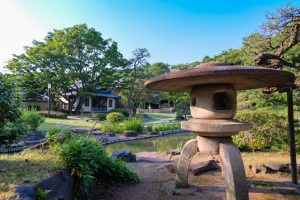
Higo-Hosokawa Garden stands on the site that used to be the residence and garden of the Higo-Hosokawa clan, an influential family who governed over the region that is now Kumamoto Prefecture during the Edo period. A policy introduced by the first Tokugawa shogun, Ieyasu (1543 -1616), required feudal lords to have residences in the capital and to alternate living on their domain and in Edo for a year. The Hosokawa clan’s residence neighbored Camellia Hill, which became Chinzanso, the residence of Duke Yamagata Aritomo (1838 – 1922), and later Hotel Chinzanso Tokyo.
Higo-Hosokawa Garden is one of the most beautiful and best maintained Japanese gardens in Tokyo. The layout of its pond with bridges and pines, surrounded by hills that offer panoramic views of the entire site exemplifies the ideals of traditional Japanese landscaping, which sought to recreate the wide scenery of mountains and seas in miniature form.
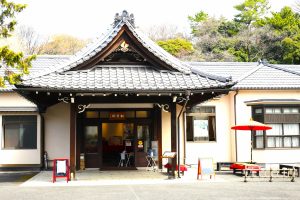
Shouseikaku, the majestic Japanese building near the entrance, used to be a school operated by the Hosokawa clan in the late Edo period. After being reinforced against earthquakes, it was opened to the public in 2016.
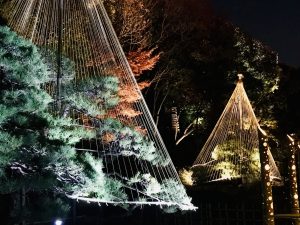
Picture courtesy of Higo-Hosokawa Garden
The garden is renowned for its fall foliage light-ups in late November with an event called Higo Akari. In addition to the vibrant red foliage of the illuminated maple trees in the evening, the pines are adorned with yuki-tsuri, a system of ropes that ensures the branches don’t break under the weight of snow in winter. The event is complemented by a bamboo lantern art (take akari) exhibition by artists from Kumamoto. During this event, visitors can stop by Shoseikaku to enjoy matcha green tea and traditional sweets before or after relishing the dreamlike scenery of garden illuminations.
3. The Eisei Bunko Museum: Impressive Collection of Arts

The Eisei Bunko Museum is housed in a building that, in its early days, was used as an office for the Hosokawa family. The museum currently hosts exhibitions of historical documents and artworks from the extensive collection handed down through the Hosokawa family for generations.
The Hosokawa family’s collection was enriched with contemporary works of Hosokawa Moritatsu (1883-1970), the 16th head of the family. In 1950, he founded Eisei Bunko, the institution that manages the Hosokawa family collection. The Eisei Bunko Museum opened to the public in 1972, hosting regular curated exhibitions of the cultural properties selected from the collection based on a certain theme.
This museum offers visitors the chance to get insights into the immense variety of artworks, which comprise calligraphy, ceramics, lacquerware, paintings, and other aesthetic fields. The Eisei Bunko Museum often holds events and workshops in collaboration with Hotel Chinzanso Tokyo that allow guests to combine a stay at the hotel with a special guided tour or a seminar held by the museum curators.
4. St. Mary’s Cathedral: Marvel at Impressive Architecture
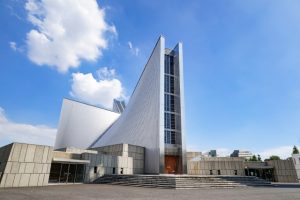
St. Mary’s Cathedral, located just across the street from the entrance to Hotel Chinzanso Tokyo, also deserves a visit. This majestic Catholic cathedral, one of just a few in Tokyo, was designed by architect Kenzo Tange and was built with funds from the Catholic community in Cologne.
The facility is open to visitors on Sunday afternoons after the morning church service. The pipe organ music resounding throughout the interior bathed in light is the highlight of any visit.
5. Kagurazaka: Explore Charming Alleys with Shrines, Cafes, and Small Shops

Kagurazaka, a district that subtly retains its historical atmosphere, is loved by Tokyo’s youth as a destination for a leisurely day out in the city. This area can be reached with a 5-minute walk from Edogawabashi Station in the opposite direction from Hotel Chinzanso Tokyo.
During the Edo period, there used to be many shrines and temples, as well as samurai residences in this area. In the days of early modern Japan, it was a gathering place for people involved in cultural activities such as writers, stage performers, and artists. The district flourished as an entertainment district with high-class ryotei where diners could enjoy dance performances by talented geisha.

Traces of this past can be felt by taking a walk along Kagurazaka’s narrow alleys such as Hyogo Yokocho, Geisha Alley, or Kakurenbo Yokocho. The many souvenir and interior decoration shops, cafes, and family-owned businesses that line both sides of Kagurazaka Avenue have been built in a way that incorporates the history of this area into their architecture. The district is always bustling with shoppers and visitors, but lets you feel as if you’ve slipped through time back to early modern Japan.
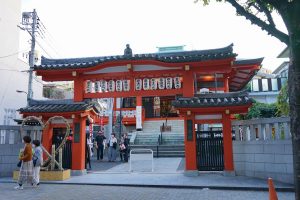
Bishamonten Zenkokuji Temple, with its large vermillion gate facing the main avenue, lies at the center of Kagurazaka. It attracts many visitors through its beautiful architecture that stands out among the modern buildings in the area. Akagi Shrine, with its new shrine hall and precincts designed by none other than architect Kengo Kuma, is also a must-visit in the area.
Kagurazaka has been gathering attention for its traditional dance festivals, such as Kagurazaka Awaodori, which is usually held in summer, or the Halloween Bakeneko Festival, where all participants dress up as cats. On weekends and festival days, the main avenue becomes a pedestrian zone, allowing visitors to watch the dances and music performances up close, and even to join the dancers if they wish to take part in the fun. The vibrant festival atmosphere has become a distinctive feature of Kagurazaka.
Discover the Charm of Tokyo’s Historical Districts around Hotel Chinzanso Tokyo
During a short walk in the area around Hotel Chinzanso Tokyo, you’ll be able to explore various aspects of Tokyo’s history. In order to get deeper insights into Tokyo culture, we warmly recommend checking in as early as possible to leave time for a leisurely walk in our garden and the surrounding area.
Updated on Janury 16th, 2023
